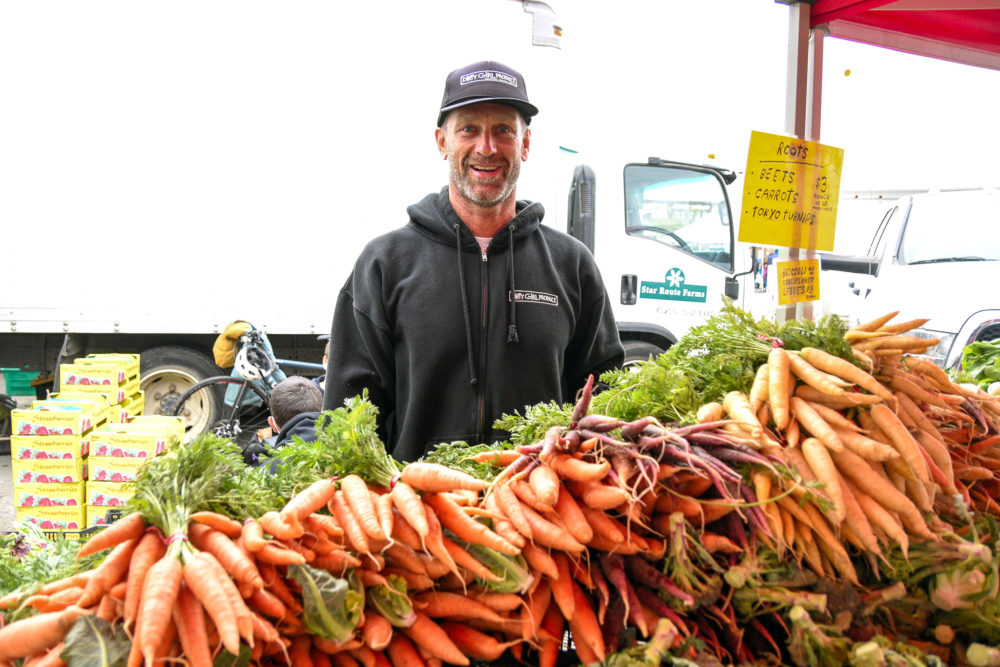Dirty Girl Produce

People
Joe Schirmer, with 25 full-time employees
Farmland
40 acres in Watsonville, about 90 miles to San Francisco
About
Dirty Girl Produce is a certified organic, family farm located in Santa Cruz County. Over 60 varieties of fruits and vegetables are grown on the farm. Dirty Girl Produce sells to customers and restaurants at five farmers markets in Santa Cruz, Berkeley, and San Francisco.
Farm owner Joe Schirmer grew up in Santa Cruz. He began working at Dirty Girl Produce in 1997 and purchased the farm in 1999. Inspired by the French intensive gardening method, Joe has adapted tractor farming to incorporate its principles. He maintains soil fertility by adding compost and organic fertilizers and plants seasonal cover crops to add nitrogen, reduce erosion, and improve soil structure.
Certification
California Certified Organic Farmer since 1995
